Canvasback Duck
- February 16, 2024
- 0 comment
The Canvasback duck, scientifically known as Aythya valisineria, is a captivating species native to North America, renowned for its striking appearance and unique behaviors. Sporting a sloping forehead and a gracefully elongated neck, Canvasbacks exhibit a distinct elegance, with males boasting chestnut-red heads and necks contrasting boldly against black breasts, while females possess subtler brownish tones. These diving ducks are predominantly found in freshwater habitats during the breeding season, including marshes, lakes, and rivers across the northern prairies and parklands of Canada and the northern United States.
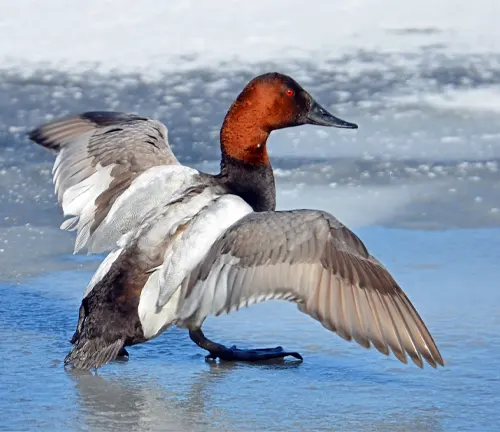
However, during winter, they migrate southward to coastal regions, estuaries, and large bodies of water. Canvasbacks are adept divers, foraging primarily on aquatic plants, roots, and invertebrates, with a particular fondness for wild celery tubers. During the breeding season, they engage in elaborate courtship displays, with pairs forming and females constructing nests concealed among reeds or grasses. Conservation efforts are underway to protect Canvasback populations, as they face threats such as habitat loss, pollution, and hunting pressure.
These majestic birds play a vital role in ecosystem health, serving as indicators of wetland biodiversity and contributing to the balance of food webs. With their cultural significance and ecological importance, Canvasback ducks stand as symbols of natural beauty and inspire admiration among birdwatchers and outdoor enthusiasts alike.
| Attribute | Description |
|---|---|
| Scientific Name | Aythya valisineria |
| Common Name | Canvasback duck |
| Appearance | Striking chestnut-red head and neck |
| Black breast with white body | |
| Females have subtler brownish tones | |
| Habitat | Freshwater habitats during breeding season |
| Northern prairies and parklands of North America | |
| Coastal regions, estuaries, and large bodies of water during winter | |
| Behavior | Adept divers, foraging on aquatic plants, roots, and invertebrates |
| Elaborate courtship displays during breeding season | |
| Conservation Status | Faces threats such as habitat loss, pollution, and hunting pressure |
| Significance | Indicator of wetland health and biodiversity |
| Contributes to balance of food webs | |
| Cultural and recreational significance |
Physical Characteristics
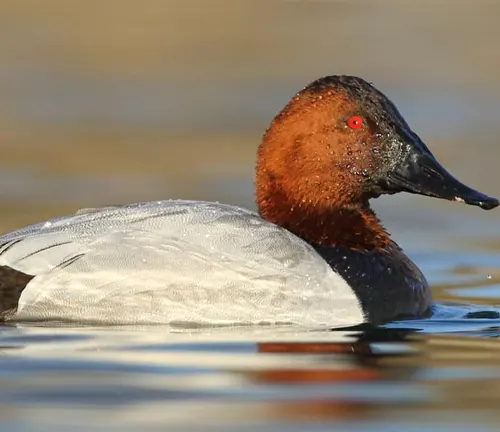
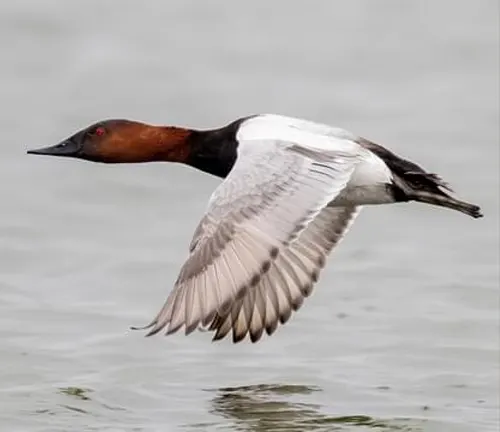
The Canvasback duck (Aythya valisineria) is characterized by several distinctive physical features. These diving ducks possess a medium to large-sized body with a sleek and elongated profile. One of the most striking features of the Canvasback is its sloping forehead, which gives it a distinctive appearance compared to other duck species.
Male Canvasbacks are particularly notable for their vibrant plumage during the breeding season. They sport a chestnut-red head and neck, which contrasts boldly with a black breast. The rest of their body is predominantly white, with black undertail coverts. In contrast, female Canvasbacks exhibit more subdued colors, with brownish tones on their heads and bodies.
Canvasbacks have a long, elegant neck that adds to their graceful appearance. Their bills are relatively long and narrow, with a black tip and a pale blue-gray base. This bill shape is well-suited for their feeding habits, allowing them to grasp and consume aquatic vegetation and invertebrates.
Habitat and Distribution
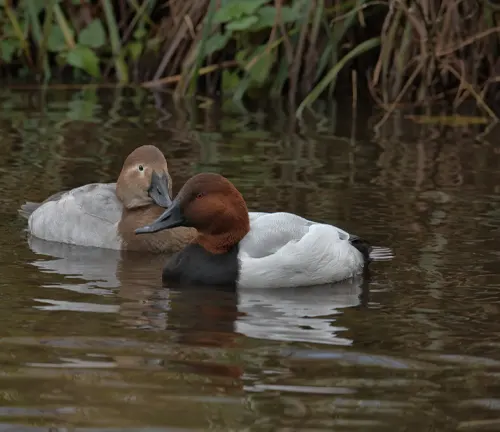
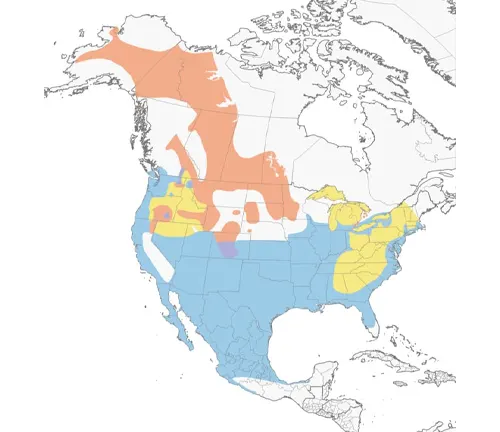
The Canvasback duck (Aythya valisineria) is primarily found in North America, where it inhabits a variety of freshwater habitats during different times of the year. During the breeding season in spring and summer, Canvasbacks are commonly found in the northern prairies and parklands of Canada and the northern United States. These breeding grounds include areas with suitable wetland habitats such as marshes, lakes, and rivers, where the ducks build their nests concealed among vegetation.
As the seasons change and temperatures drop, Canvasback ducks embark on a southward migration to escape harsh winter conditions. During the winter months, they can be found in coastal areas, estuaries, and large bodies of water across North America, including the southern United States and parts of Mexico. These wintering grounds provide the ducks with access to open water and abundant food resources to sustain them during the colder months.
Behavior and Mating


The behavior and mating habits of Canvasback ducks (Aythya valisineria) are fascinating and play a crucial role in their reproductive success. During the breeding season, which typically occurs in the spring and summer months, Canvasback ducks engage in a series of complex behaviors to attract mates and establish breeding territories.
One of the most notable behaviors exhibited by Canvasback ducks during the breeding season is elaborate courtship displays. Males often engage in intricate rituals to impress potential mates, including synchronized swimming, head-bobbing, and vocalizations. These displays serve to demonstrate the male’s fitness and suitability as a mate to females.
Once pairs have formed, Canvasback ducks construct their nests in concealed locations among reeds, grasses, or other vegetation near water bodies. The female takes the lead in nest-building, using materials such as twigs, grass, and down feathers to create a secure nest structure. She then lays a clutch of eggs, typically ranging from 5 to 10 eggs, depending on environmental conditions and food availability.
Conservation Status
The conservation status of the Canvasback duck (Aythya valisineria) is generally considered to be of least concern according to the International Union for Conservation of Nature (IUCN) Red List. However, like many other waterfowl species, Canvasback ducks face various threats to their populations and habitats, which necessitate ongoing conservation efforts to ensure their long-term survival.
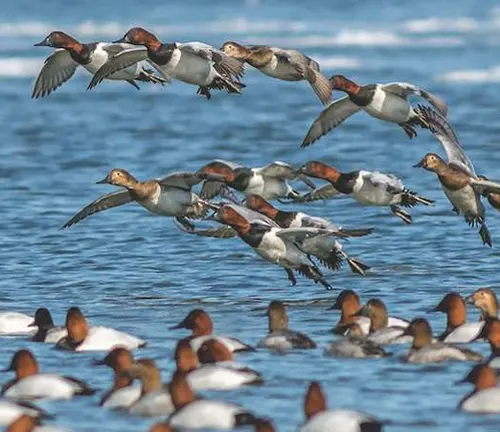

One of the primary threats to Canvasback duck populations is habitat loss and degradation. Wetland habitats, including marshes, lakes, and rivers, are being lost or degraded due to factors such as urbanization, agricultural expansion, and pollution. This loss of habitat reduces the availability of suitable breeding and foraging areas for Canvasback ducks, impacting their ability to successfully reproduce and find food.
Pollution, including runoff from agricultural fields and industrial activities, poses another significant threat to Canvasback ducks and their habitats. Contaminants such as pesticides, fertilizers, heavy metals, and oil can accumulate in water bodies, affecting water quality and the availability of food resources for ducks. Pollution can also directly harm ducks through ingestion or exposure to toxic substances.
Different Species
Redhead Duck
(Aythya americana)
Similar in size and shape to the Canvasback, the Redhead duck has a reddish-brown head and a gray body. It is also found in North America and prefers freshwater habitats.
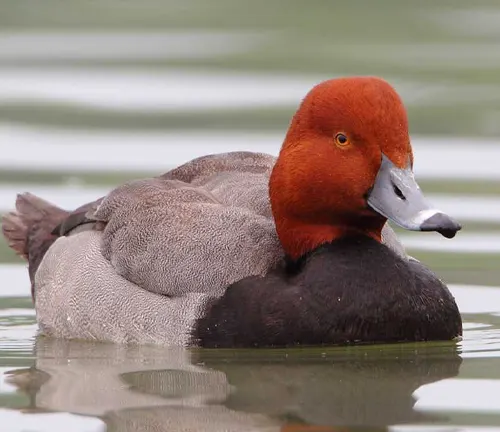
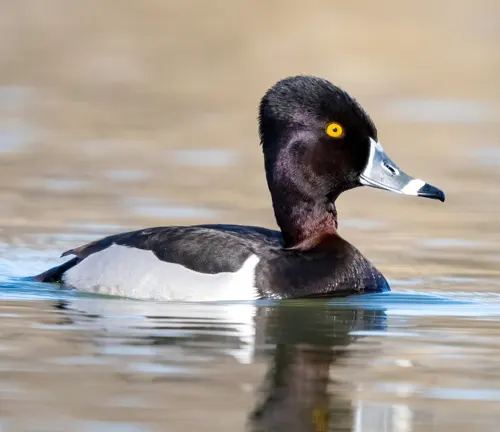
Ring-necked Duck
(Aythya collaris)
Slightly smaller than the Canvasback, the Ring-necked Duck has a distinctive white ring around its bill and a bold white ring around its neck. It inhabits freshwater lakes and marshes across North America.
Greater Scaup Duck
(Aythya marila)
Larger than the Canvasback, the Greater Scaup has a dark head with a greenish sheen, a black breast, and a gray body. It is found in freshwater and saltwater habitats across North America, Europe, and Asia.
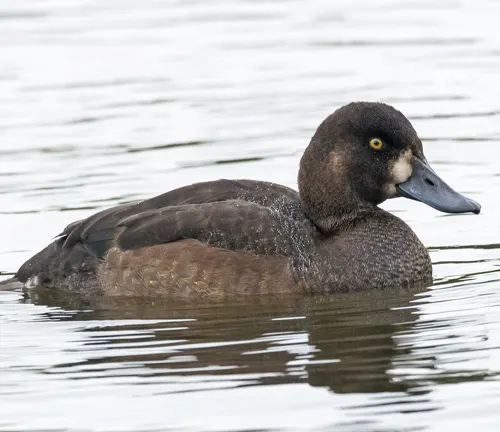

Lesser Scaup Duck
(Aythya affinis)
Similar in appearance to the Greater Scaup but smaller in size, the Lesser Scaup also has a dark head with a purplish sheen, a black breast, and a gray body. It inhabits freshwater lakes and marshes across North America.
Frequently Asked Question (FAQs)
- What is unique about the Canvasback duck compared to other duck species?
One unique aspect of the Canvasback duck is its specialized diet, which includes a high proportion of aquatic vegetation such as the tubers of wild celery. This diet preference sets it apart from many other duck species. - How long do Canvasback ducks typically live in the wild?
In the wild, Canvasback ducks typically have a lifespan of around 10 to 15 years, although some individuals may live longer under optimal conditions. - What are the predators of Canvasback ducks?
Predators of Canvasback ducks include mammals such as foxes, raccoons, and mink, as well as avian predators like hawks, eagles, and owls. Additionally, aquatic predators such as snapping turtles may also pose a threat. - How do Canvasback ducks communicate with each other?
Canvasback ducks communicate with each other through a variety of vocalizations, including quacks, whistles, and grunts. They also use body language and visual displays during courtship and social interactions. - Are Canvasback ducks considered good indicators of wetland health?
Yes, Canvasback ducks are considered good indicators of wetland health because they rely on healthy aquatic habitats for breeding, foraging, and migration. Their presence or absence can provide valuable insights into the overall health of wetland ecosystems. - How do Canvasback ducks migrate between their breeding and wintering grounds?
Canvasback ducks migrate between their breeding and wintering grounds primarily by flying long distances. They follow traditional migratory routes, often utilizing stopover sites along the way to rest and refuel. - What are some interesting facts about the breeding behavior of Canvasback ducks?
Canvasback ducks are known for their elaborate courtship displays, which may involve synchronized swimming, head bobbing, and vocalizations. Once pairs form, females construct nests concealed among reeds or grasses, where they lay a clutch of eggs. - Are there any specific conservation organizations dedicated to protecting Canvasback duck populations?
Yes, there are several conservation organizations dedicated to protecting Canvasback duck populations, including Ducks Unlimited, the National Audubon Society, and the U.S. Fish and Wildlife Service. - What can individuals do to help conserve Canvasback duck habitats?
Individuals can help conserve Canvasback duck habitats by supporting wetland conservation initiatives, reducing pollution, advocating for habitat protection measures, and participating in citizen science projects. - How do researchers study Canvasback duck populations and behaviors?
Researchers study Canvasback duck populations and behaviors through a variety of methods, including banding and tracking individuals, conducting surveys and population assessments, and using remote sensing technologies to monitor habitat use. - Are there any historical or cultural significance associated with Canvasback ducks?
Yes, Canvasback ducks have historical and cultural significance, particularly in the realm of waterfowl hunting traditions. They have long been prized by hunters for their game qualities and are celebrated in art, literature, and culinary traditions. - Can Canvasback ducks interbreed with other duck species?
While Canvasback ducks are not known to interbreed with other duck species in the wild, they may occasionally hybridize with closely related species such as the Redhead duck or the Greater Scaup. - Are Canvasback ducks territorial during the breeding season?
Yes, Canvasback ducks can be territorial during the breeding season, particularly around nesting sites. They may defend their territory against intruders through aggressive displays and vocalizations. - How do Canvasback ducks protect themselves from predators while nesting?
Canvasback ducks protect themselves from predators while nesting by selecting concealed nest sites, such as among reeds or grasses, and by remaining vigilant for potential threats. They may also employ distraction displays to lure predators away from the nest. - Do Canvasback ducks exhibit any interesting social behaviors within their flocks?
Yes, Canvasback ducks exhibit various interesting social behaviors within their flocks, including cooperative foraging, synchronized swimming, and communal roosting. They may also engage in playful behaviors, such as splashing and preening, during periods of social interaction.



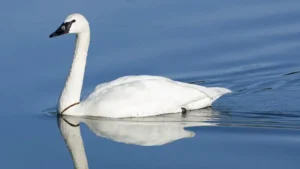
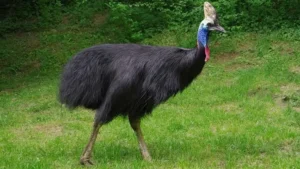

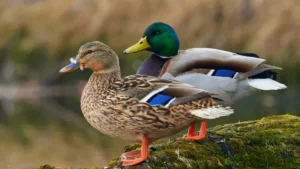

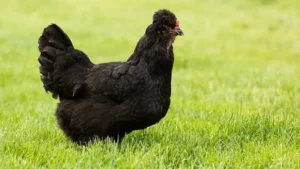
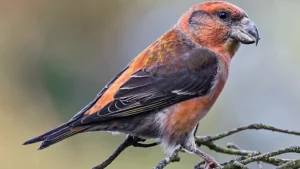


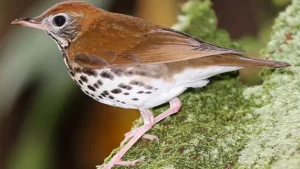
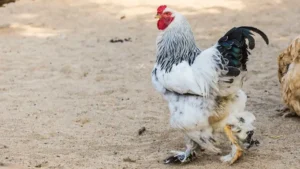
Leave your comment